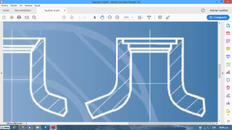Hi,
Does anyone have the exact specification for the neck thread of an M25x2 connection. In particular, the chamfer angle and depth as well as the tolerances.
I am making up a bench stand onto which I will screw in a pillar valve in order to make regulator servicing easier and more ergonomic.
Thanks,
Nick
Does anyone have the exact specification for the neck thread of an M25x2 connection. In particular, the chamfer angle and depth as well as the tolerances.
I am making up a bench stand onto which I will screw in a pillar valve in order to make regulator servicing easier and more ergonomic.
Thanks,
Nick





